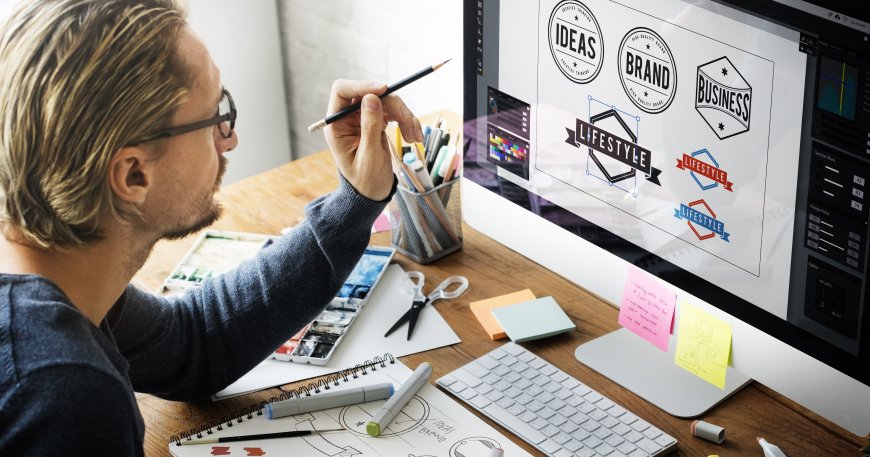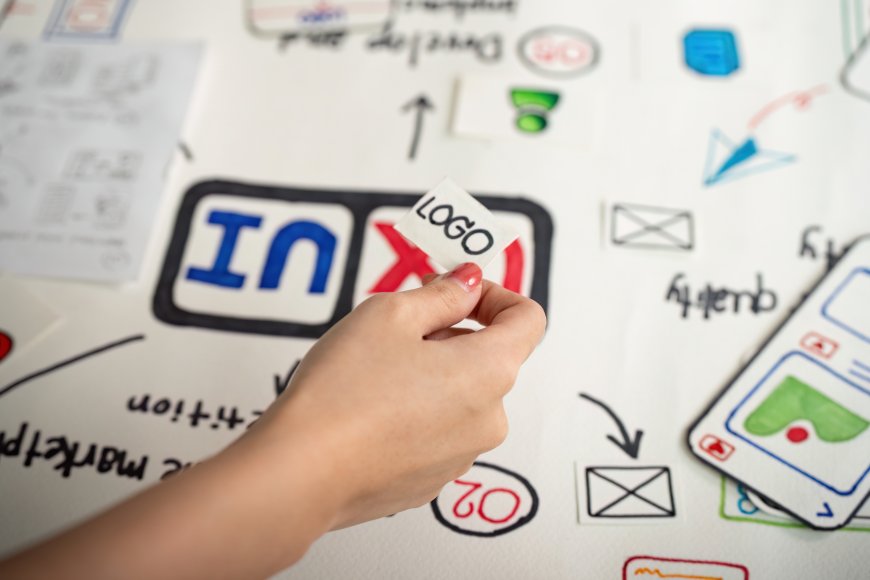A Picture Tells a Thousand Words: Why Brand Designs Must Tell Stories in 2026
In 2026, brand design is more than visuals—it’s storytelling. Learn how effective design builds emotional connections, strengthens identity, and drives lasting audience impact.

The year 2026 is just around the corner. Innumerable pictures, logos, and advertisements are forming before our eyes. However, how many of them do we truly recall? Quite a few.
In the current rapid and loud digital environment, merely having a good-looking logo or website is not enough. It must exude reality. It must communicate.
This is the major transformation that is currently taking place. Branding is no longer associated only with beautiful hues but rather with an understanding of human nature that is profound and real. If your logo design is not able to touch the hearts of people, it will get lost in the din.

The New Rule: Authenticity is the Currency of Trust
Everybody has been able to practice spotting a fake so well. The advent of AI-created content has left people looking for one thing mainly: Trust.
This trust-seeking is the reason why storytelling in branding design has become the most significant aspect. A strong story proves you are real. It proves you have a purpose that goes beyond simply selling a product.
The EEAT Framework: Why Your Story Needs Authority
The EEAT framework awards the content in the vast digital world a score based on the following criteria: Experience, Expertise, Authoritativeness, and Trustworthiness. There are four aspects of great storytelling that are inherent in the building process.
Experience: The tale of your brand is its life experience. It illustrates your origin, your reason for starting, and what you have gained in the process.
Expertise: The moment your branding and design reveal a profound understanding of your mission, it becomes a demonstration of your teaching capability.
Authoritativeness: A storyline that is coherent and real places you as a trustworthy communicator in your sector.
Trustworthiness: This is the most substantial aspect. A sincere and straightforward story makes it easier for people to trust you and thus, are willing to part with their money for your product or service.
Case Study: When Design Speaks Volumes
Let's look at real-life examples of how simple design elements can carry massive stories.
Example 1: Airbnb’s "Bélo" Symbol
When Airbnb rebranded, they created the "Bélo" symbol. It looks like a mix of four things:
1. A letter 'A'
2. A heart
3. A location pin
4. A person
This straightforward brand logo design narrates a full tale silently and implies: "You can be anywhere." It is an illustration that should be sketched, passed around, and claimed by all. The logo is more than a mere identity of a reservation company; it denotes a sensation of belonging and community universally. Such is the might of a miniature, narrative-based emblem.
Example 2: The Transparency of Illuminate Labs
The health supplement industry often has low trust. Illuminate Labs decided to build its entire brand design around the story of transparency. They publish third-party lab test results for every batch of every product right on their website.
Their packaging and website don't use heavy, emotional words. Instead, they use a clear, clinical, and honest visual style. The clean, no-frills look is part of their story. The design itself visually shouts: "We have nothing to hide." Their choice of a transparent, honest design language is what builds incredible trust.

The Elements of a Story-Driven Brand Design
How can businesses use their brand design to tell a better story for 2026? The answer lies in making every visual choice intentional.
1. The Logo: Your Visual Promise
Your brand logo design should deliver assurance. A hidden arrow in the FedEx logo, which symbolizes speed and directness, is one of the classics among instances with the finest examples. It is a minuscule element, but it imparts a deeper meaning to the logo.
We expect that in 2026, the trend will be heading to 'Adaptive Logos' styles. These are logos that have different variations depending on their placements (the smallest form on an app icon, the largest on a website). Such versatility signifies a contemporary, adaptable brand that is available everywhere you are.
2. Color and Typography: Setting the Mood
Picture a bank. The major color used by the bank is blue, as it denotes trust, stability, and reliability.
Imagine a brand that has made sustainability its main concern. They would go for earth tones, greens, and natural textures. This color combination would narrate the story of eco-friendliness and organic growth.
The font you choose also has a character. Serif fonts (which are the same as in vintage literature) are connected with civilization, heritage, and power.
On the other hand, sans-serif fonts (uncluttered and uncomplicated) are related to contemporary, being friendly, and having a digital-first mindset.
Your choices in a total brand identity design are like the film's score— they set the emotional atmosphere for the whole experience.
3. Motion and Interaction: The Living Story
Design is no longer a flat, static image. In 2026, motion is a key storytelling tool.
Micro-interactions: When you click a button and a tiny animation plays, that’s motion. It tells a story of an easy, smooth, and friendly experience.
Animated Logos: A logo that subtly moves is not just decorative. It can show energy, growth, or a constant state of improvement. This makes the branding design feel more human and alive.
The RAG Principle: Retrieval-Augmented Grounding
For the content itself to rank well (and for a brand to be trusted), the RAG principle is important. This means your claims must be grounded—or based on the retrieval of real, factual information.
For your brand's story, the message is: Show, don’t just tell.
If your story is centered on sustainability, then the brand design might incorporate recycled packaging, or the website could use low-energy fonts and colors to create a low-energy site that reflects the use of eco-friendly printing and packaging.
If your story is about community, then the images used should be of actual customers and partners and not just stock pictures.
The visual evidence is the grounding for your story.
Final Thought: The Future is Human-Centered Design
The companies that will be dominating the market in 2026 are those that prioritize human beings over super high-polish perfection. The ‘Anti-Polish’ trend is on the rise, wherein the brands deliberately show a little imperfection and act more naturally to win over the customers' trust.
Successful branding and design in the future will not rely on intricate graphics. It is going to be a matter of handling honesty and simplicity. It is a case of a brand design that is so truthful and so evident that the consumer immediately gets the message, "I am familiar with this tale, and my trust in it is justified."
It is a matter for every company to reflect upon: With your design, what story are you telling, and is it worth a thousand words?
What's Your Reaction?
 Like
0
Like
0
 Dislike
0
Dislike
0
 Love
0
Love
0
 Funny
0
Funny
0
 Angry
0
Angry
0
 Sad
0
Sad
0
 Wow
0
Wow
0























































































































































































